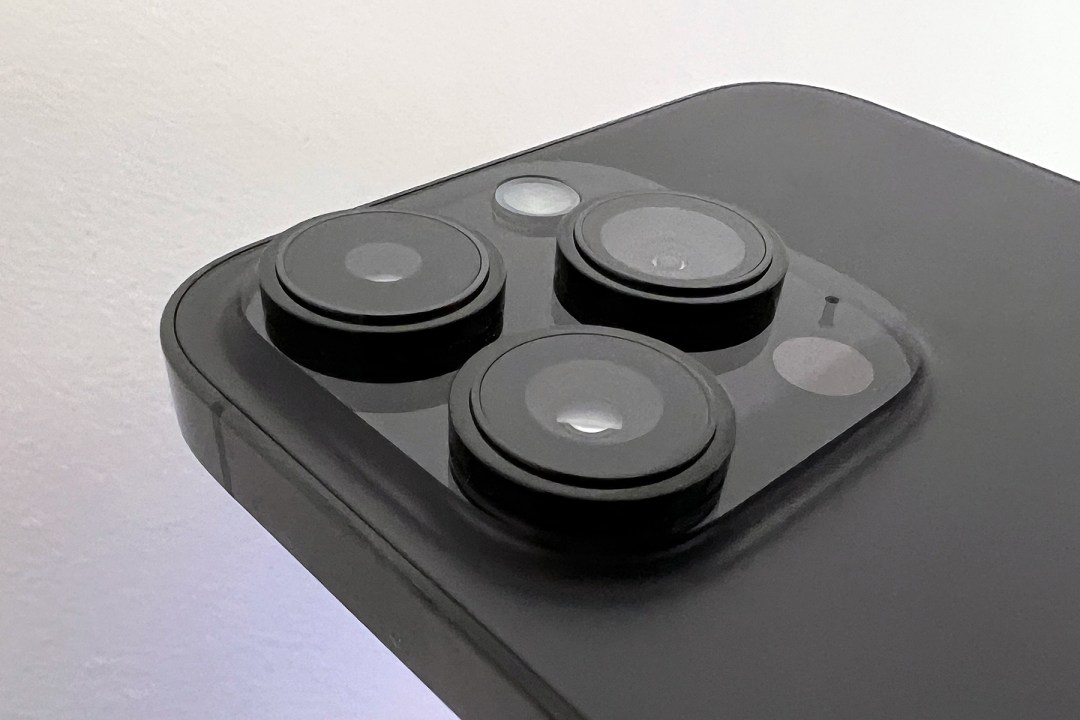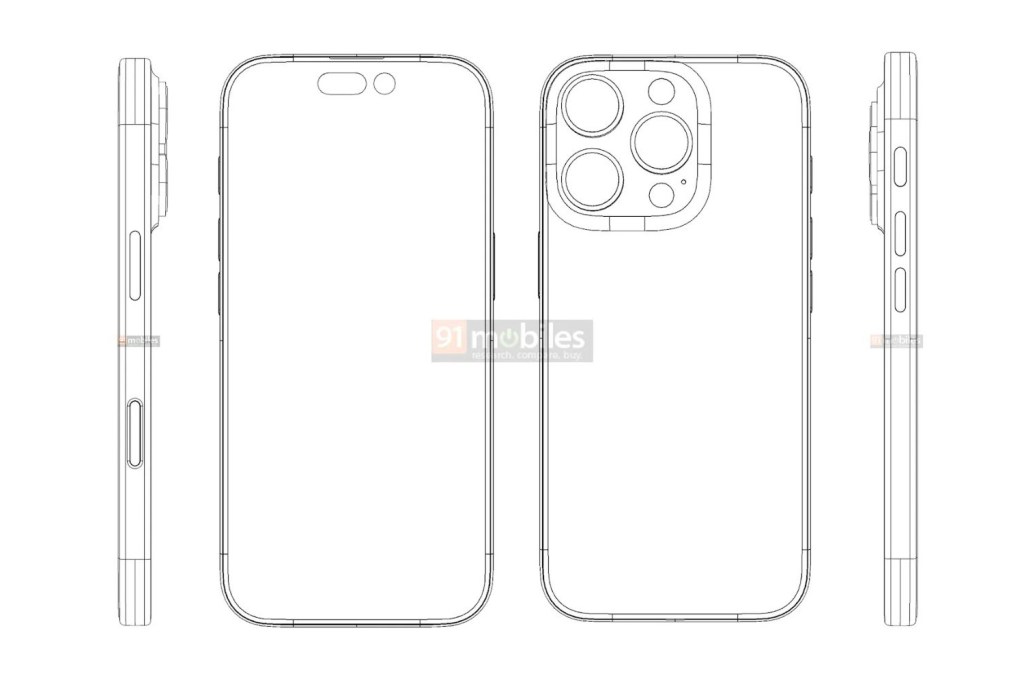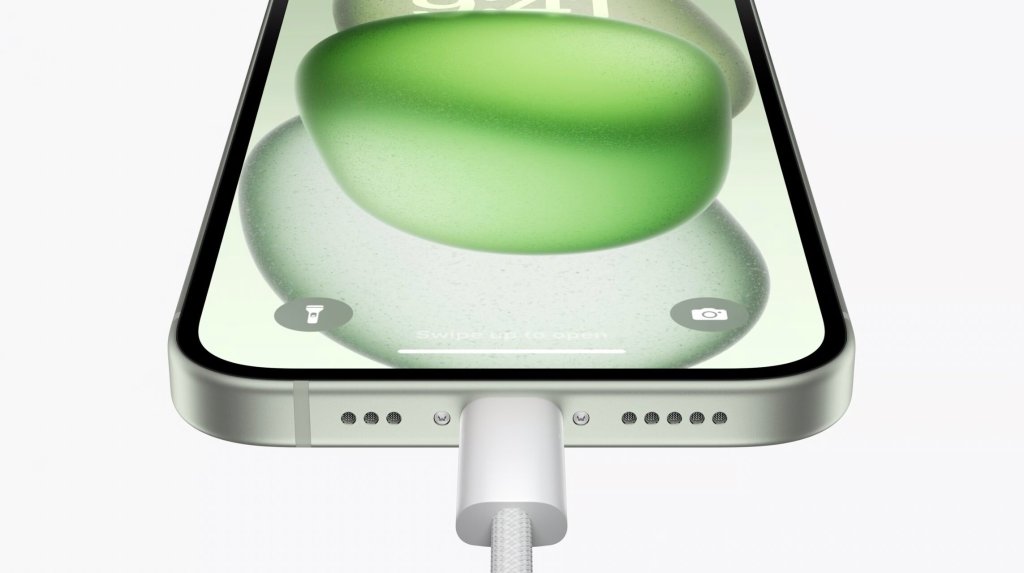Apple iPhone 16: what upgraded features will appear later this year?
Some features didn't make the cut for iPhone 15. They'll surely come to the 2024 iPhone 16 instead

Apple’s upcoming phones have long been a matter of intense interest. 2024’s iPhone 16 will be no different.
If iPhone launch event form continues, we can expect it to debut on the 10th of September. And seeing how several features once mooted for the iPhone 15 never reached final production, the rumour mill is swirling about whether they’ll make an appearance here.
Sure, it’s still early to be talking about the 2024 iPhone – but that doesn’t mean we don’t have a good idea of what’s in store for the next generation, in terms of design and hardware.
iPhone 16 name: time for an Ultra?
Suggesting the 2024 iPhone will be called anything but iPhone 16 seems churlish. We’re still a few years off the 20th anniversary of the iPhone; is 2027 when we’ll get a break in the naming strategy? You may recall that Apple launched the iPhone X after a decade of sales and missed out iPhone 9. Could we get an iPhone XX at that point?
There’s a bigger chance that Apple will bring its Ultra branding to the iPhone for the first time. There were rumours the iPhone 15 Pro Max was to use it. Insiders think it makes more sense in 2024 because the top-end handset is going to be larger (see the display section below).
The strategy of introducing higher-spec models at premium prices was spelled out in Apple’s Q1 2023 earnings call. “I think people are willing to really stretch to get the best they can afford in that category,” Tim Cook said at the time. And with so many Apple Watch Ultras on people’s wrists, why not take the same approach with the iPhone?
iPhone 16 design rumours: more customisable buttons

The iPhone 15 Pro and Pro Max replaced the mute switch – once a staple of every iPhone model – with a customisable Action button. Expect the iPhone 16 Pro to take the concept a step further with a new ‘Capture button’. CAD designs leaked by 91mobiles show it on the same side of the phone as the power button, sitting flush to the frame.
There’s been lots of talk online about the power and volume buttons using solid state tech. We’ve seen it before on older iPhone and iPad Home buttons, where haptics make you think you’ve pressed a button but there’s no physical movement. Fewer moving parts mean a lower chance the button will go wrong, and it’s better for waterproofing. Additional haptic hardware will surely be needed; rumours suggest two additional Taptic engines would be needed, which would take up valuable space inside the phone.
The capture button reportedly won’t feature on the regular iPhone 16 models, but they are in line to get an action button instead of a mute switch. Apple has tested a longer Action button design, but this has apparently been scrapped in favour of one that looks virtually the same as the iPhone 15 Pro’s.
Apple has apparently experimented with two different rear camera arrangements for the iPhone 16: an iPhone 12-esque bump with two individual lenses stacked vertically, and an iPhone X-style lozenge containing both lenses. The former is most likely, and has been seen on more internal prototype units than the latter.
We’re not convinced of an iPhone X styling revival, as it would set the regular iPhone 16 apart too much from the Pro variants. Individual lenses make the most sense, but we wouldn’t mind a return to vertical stacked sensors in place of the diagonal ones seen on the last few iPhone generations.
iPhone 16 display: bigger and better?
This year’s Pro iPhones are apparently in line for larger screens than ever. Well-known display analyst Ross Young suggests the iPhone 16 Pro Max (or 16 Ultra, as it may be known) will have a 6.86in panel, up from 6.7in in the current model. That would give it a 19.6:9 aspect ratio, instead of the current 19.5:9. Young also cites iPhone 16 Pro at 6.27in.
Other leakers have since joined in with this prediction, including long-time Apple watcher Ming-Chi Kuo.
There is some suggestion that the base iPhone 16 could grow to 6.3in, though this seems less certain. The iPhone 16 Plus is also more of a mystery.
Sadly it sounds like the iPhone 16 and 16 Plus will miss out on ProMotion; the 120Hz refresh rate feature is currently exclusive to the Pro variants. According to The Elec, it’ll be 2025 and the iPhone 17 before that becomes standard across the entire line-up, courtesy of display panel supplier BOE. A 60Hz refresh rate will keep both mainline iPhones behind even entry-level Android alternatives.
All the way back in 2022 there were whispers about under-display front cameras coming to the iPhone 16. It’s technically possible – we’ve seen them on some Android phones – but it’s highly unlikely given more recent rumours and leaks. We can’t see Apple throwing away all the work it has put into Dynamic Island so soon after bringing it to the mainstream iPhone models, either. There is some suggestion that an under-display Face ID could appear in 2025 with iPhone 17 Pro instead.
Hardware: the most powerful iPhone yet
You don’t have to be a tech expert to predict that the iPhone 16 will be the most powerful iPhone to date – but we’ve also seen some leaks/rumours to firmly back this up. Tipster Nguyen Phi Hung (via Wccftech) has revealed that the upcoming Apple A18 Pro processor, likely to be found in the iPhone 16, has scored 3500/8200 on Geekbench 6’s benchmark software.
The first number represents a single-core test, while the second shows the multi-core results. If accurate, then the iPhone 16 will be a beastly device indeed. The single-core results represent around a 14% increase compared to Apple’s own formidable M3 chips, while being roughly 23% faster than the predicted score for Qualcomm’s next-gen Snapdragon 8 Gen 4 chipset. Qualcomm’s offering is expected to be around 29% faster in multi-core calculations, but with how tightly Apple knits together its hardware and software, it’s safe to say that the iPhone 16 will not disappoint in the power department, if these leaks prove to be true.
The current iPhone 15 Pro and Pro Max’ A17 Pro processor scores 2906 and 7231 for single-core and multi-core results, respectively. Bring on the A18 Pro, we say.
Battery and charging

The iPhone 15 series moved to USB-C and got bigger batteries (the iPhone 15’s is 14% bigger for example), but wired charging speeds didn’t see any major gains. Using the sold-separately 20W USB-C power adaptor, it still takes 30 minutes to hit 50%. When you consider some Android phones are now capable of 150W, and event the rival Samsung Galaxy S24 Ultra tops out at 45W, the iPhone sounds particularly sluggish.
There are whispers of 40W for iPhone 16. Expect MagSafe wireless charging to stay at 15W, given that speed has now been incorporated into the Qi2 standard.
Some rumours also point towards a more reliable battery, thanks to stacked battery tech. This is supposed to last longer and have a higher capacity.
5G modem: no Apple chips – yet
It’s no secret Apple is working on its own 5G modem; originally it was expected to arrive with the iPhone 16, but that has since changed. Qualcomm has now announced that it will be in Apple “smartphone launches in 2024, 2025 and 2026”. That doesn’t rule out a gradual introduction of Apple’s own chip, which will stay separate from the main A Series chipset at first.
The target will no doubt to have one integrated chip to cover all telephony tech, as well as Bluetooth and Wi-Fi 7 (which is set to debut with iPhone 16). That’s likely still years away at this point.
How did this situation come about? Rewind to 2017, when Apple and Qualcomm had a big patent dispute. Apple instead turned to Intel, which had been making decent 4G iPhone modems. Trouble was, Intel wasn’t great at making efficient 5G ones. So in 2019 Apple made peace with Qualcomm – but also bought up most of Intel’s modem division (including some 2,200 employees) so it could take on development. It seems that half a decade on we’re still a little way off seeing the result of this work.
iPhone 16 cameras: even zoomier zoom

Last year’s iPhone 15 Pro Max got a persiscope lens, but there’s a better version on the way this year. Indeed, a ‘Super Telephoto’ periscope lens may be set for iPhone 16. This stems from a rumour on Weibo that also suggests that the focal length will get significantly longer for this year’s models. This is firmly in the unknown for now though.
A further report from supply chain analyst Ming-Chi Kuo suggests the 5x tetraprism zoom lens will be found on both Pro models for the first time. The iPhone 15 Pro maxed out at 3x using traditional glass, meaning you had to buy the iPhone 15 Pro Max for the best possible zoom. The change is reportedly down to better production yields at supplier Largan, and the fact the iPhone 16 Pro is expected to grow in size – making room for the higher-end camera hardware.
Elsewhere, rumours also point to a special atomic layer deposition (or ALD) anti-reflective lens coating to help eliminate pesky lens flare. It’s expected that this feature will be reserved for the iPhone 16 Pro models. And as for the all-important sensors, Apple is expected to use Sony’s latest camera sensor technology, which splits photodiodes and pixel transistors into two distinct layers. In other words, more light is able to be captured for each individual pixel, allowing twice the amount of light compared to current sensors. It’s very likely that this sensor improvement will be reserved for the iPhone 16 Pro and Pro Max, and if true, could result in some pretty incredible low-light shots.
Software: Apple is going in on AI
On-device AI seems to be the new smartphone battleground: Google struck first with the Pixel 8 Pro, but Qualcomm wasn’t far behind with Snapdragon 8 Gen 3, which will do generative AI of its own. Apple is expected to add something similar to iOS 18, with older handsets relying on the cloud but the iPhone 16 being able to do things locally.
Leaker @Tech_Reve suggests Apple will use a large language model (LLM) to completely overhaul Siri, turning it into the “ultimate virtual assistant”. Apps such as Messages, Pages, Numbers and Apple Music could also benefit from AI-created suggestions and predictions.
Analyst Ming-Chi Kuo claims a majorly upgraded microphone will bring greater water resistance and a significantly better signal-to-noise ratio. The move is to make Siri better at understanding you – handy when voice-controlled AI is expected to be one of the main points of focus at the iPhone 16’s reveal in September 2024.
